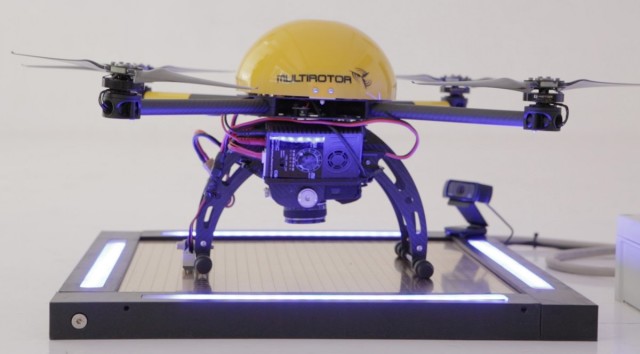 Drones are already making headlines about how they can dramatically cut costs for one-off inspections. Replacing $2000/hr helicopter surveys, accessing hard to reach areas, inspecting hazardous locations or rapidly surveying large areas have all provided huge time and cost savings through the use of drones. However, the cost of deploying 100 drones each with a trained & certified operator is around a $10M/year excluding logistics costs.
Drones are already making headlines about how they can dramatically cut costs for one-off inspections. Replacing $2000/hr helicopter surveys, accessing hard to reach areas, inspecting hazardous locations or rapidly surveying large areas have all provided huge time and cost savings through the use of drones. However, the cost of deploying 100 drones each with a trained & certified operator is around a $10M/year excluding logistics costs.
This currently makes them too expensive for otherwise ideal long-term applications such as continuous security patrols, monitoring infrastructure, or regularly surveying crops. To overcome this, Skysense is enabling drone deployments with minimal human intervention through automatic charging and deployment oriented software services.
The company has developed a direct contact technology that charges batteries with up to a 10A current, as fast as a conventional battery charger. With one of these in place as a standalone pad or as part of an automated shelter, a drone just needs a small 50g part to create a circuit straight to the battery whenever it lands. This allows the drone to start recharging the moment it touches down, letting it continue monitoring as soon as possible or wait with its batteries kept at 100% ready for deployment.
The pad then becomes the operator in the field, accessible online using a proprietary cloud system. It will act as an interconnected node of Skysense’s Drone Charging Infrastructure, either streaming video and sensor information or downloading it when the drone next lands. The online dashboard and APIs not only provide remote access to these feeds, but also shows the health status for the fleet and allow updates of flight plans by integrating with 3rd party software.
Of course, there are already other options in development or on the market that achieve some of this. If keeping downtime to an absolutely minimum is vital, battery swapping stations are being prototyped that can swap in a pre-charged pack. However, this speed is achieved by sacrificing reliability as they are mechanical devices with lots of moving parts. The other main alternative is induction charging. These are fine, but suffer from heating problems, require a heavy coil that reduces flight time and are much slower to charge with a 1A current and are less energy efficient.
The tech is instead aimed at offering a new proven, superior and scalable alternative. With fast & reliable charging, users can automate the operation of a single drone or scale up their applications to form a large fleet. Once set up, a fleet can run 24/7 through the night and weekends, or wait there always ready for deployment.
Clients typically use the solution for long-term monitoring situations. Security firms such as Prosegur and AVANSIG have multiple drones constantly out surveying large premises with visible and infrared cameras, where extensive CCTV installations or human patrols would otherwise be needed.
“We like Skysense solution because is mature, reliable and easy to use. When drones land they get recharged in relatively short time. We are excited to start using the web integration.” – David Trillo Pérez (AVANSIG CEO)
Skysense is mainly involved in security & defense projects but since 2015 is being integrated in the agricultural, oil and gas and logistics markets. Research projects of NASA, use Skysense to regularly fly up and down fields to monitor crop health with different sensors while Oil and gas companies survey extensive pipelines with a host of specialised payloads to detect gas leaks and other symptoms of potential problems.
Source: Press Release
